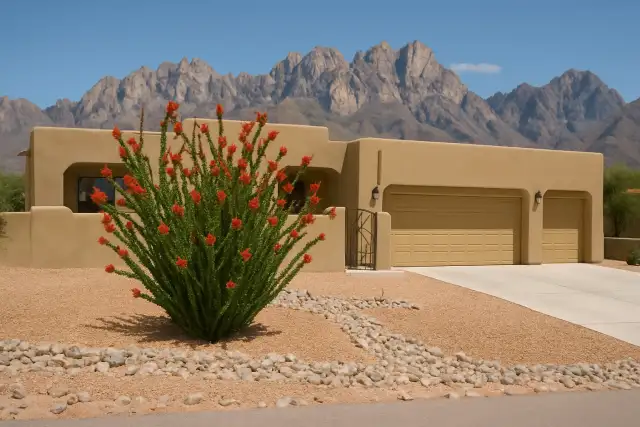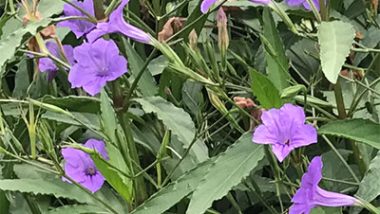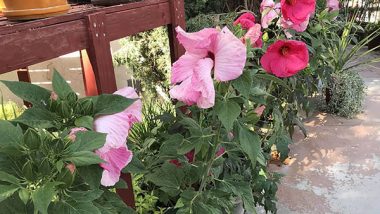Last updated on November 1st, 2025 at 05:19 pm
The Ocotillo Plant (Fouquieria splendens). It is an early spring blooming desert flowering plant. Its long spiny limbs or stems will twist and turn out towards the sky. It will look great in all desert landscapes and can tolerate poor sandy soil. It is a plant that is indigenous to the Sonoran and Chihuahuan deserts.
They produce tubular flowers that are bright orange in color, which will last from mid-spring until early summer, sometimes longer if the conditions are right. Make sure to plant it in the full, hot, blazing sun. With too much shade, it will not bloom as often. The life span of Ocotillos is somewhere between 50 and 100 years.
It is prevalent throughout the Sonoran and Chihuahuan deserts.
It is pronounced – aah·kuh·te·low.

How big does the Ocotillo get?
Height growth is about 20 – 30 ft., sometimes taller, and about 10 ft. wide. It is not a real cactus, but it sure looks like one. They will produce long tubular canes that will shoot upwards, sometimes up to 30 ft. in length. The canes have large, sharp thorns that will keep desert animals from eating their branches.
The root system is typically large but not very deep. This helps the plant take in rainwater when it does rain in the desert Southwest. Usually, it will take up to one year before it starts to leaf out and flower. However, you can speed up the process by providing it with more water during the hot mid-summer season.
Where to place this plant?
It loves the full sun too much shade, and it will not produce flowers. The Ocotillo loves being planted in rock landscapes as it can take the reflected heat from walls or rock gardens. It will also generate new foliage and blooms during the monsoon season in the Southwest.
The Ocotillo plant is perfect for Xeriscaping landscaping ideas.

It is best to make sure you have good drainage, as it will develop root rot if the plant receives too much water. Try deep watering once or twice per month after initial planting. Do this for about 3-4 months then stop completely. Also, it is a good idea to spray or mist the canes of the Ocotillo as it will absorb the water through its skin or bark.
The Ocotillo in the desert landscape.

Problems with the Ocotillo
The Ocotillo plant is an easy plant to grow and is not prone to diseases or insects, but it does happen. Sometimes, scales and mealybugs will attack this plant. Spray with a good insecticide to kill these pests. You can also use insecticidal soaps or neem oil as an organic substitute.
Often Ocotillos will take a long time to leaf out or produce a flower. The best thing to do is to water as mentioned above.
One of the most exciting things about ocotillo plants is watching them bloom! Typically, ocotillos bloom in the spring and summer months, producing stunning clusters of bright red flowers that attract hummingbirds and bees. It’s truly a sight to behold!
Care of Ocotillo
To encourage blooming, you can fertilize your ocotillos with a balanced fertilizer in the spring. This will provide them with the nutrients they need to produce those gorgeous blooms. However, it is best to mix the fertilizer at half the recommended ratio. You can also use Cactus juice if your Ocotillo looks like it needs help. Make sure your soil drains well.
In conclusion, ocotillo plant care is a breeze and the rewards are simply amazing. With a little bit of attention and love, your ocotillos will thrive and bring beauty to your outdoor space year after year. So go ahead and add this stunning plant to your garden – you won’t be disappointed!
The Ocotillo is normally available throughout most Southwest USA nurseries. Remember, it is pronounced aah·kuh·te·low.
Companion plants include Salvia, Cactus, and Russian sage.
The USDA Zone for the Ocotillo plant is 7 – 11.


If you are looking for a maintenance-free low low-watering landscape plant, here is a list of plants that will do just that. Desert names and pictures.

Greenhouse Manager, Master Gardener, and Webmaster.
If you have any questions or enjoyed this post, feel free to share your thoughts in the comments below.


